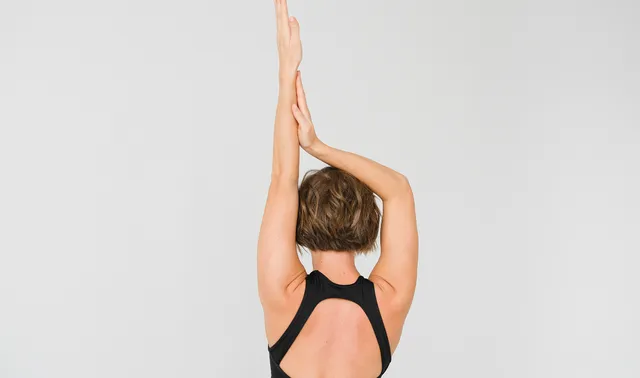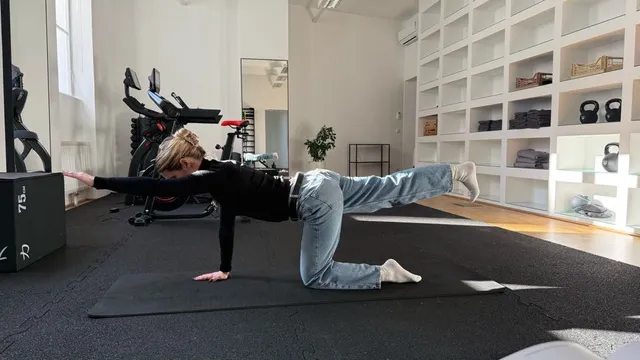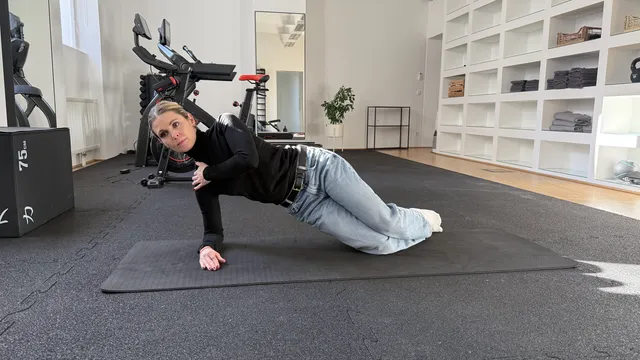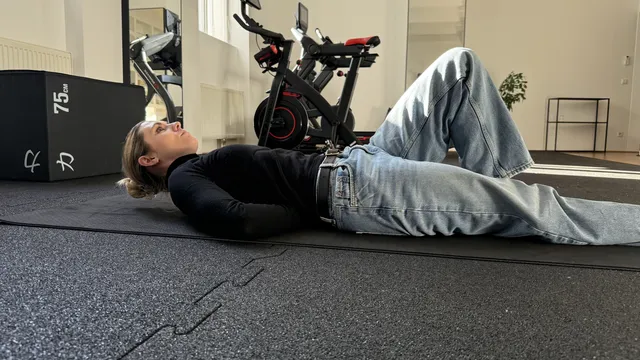The "Big Three" Back exercises according to Stuart McGill
When someone suddenly experiences back pain, many people’s first instinct is to rest in bed. However, studies have shown that lying down for too long can actually delay the healing process. Instead of just lying down, it’s much better to stay active and support your back by moving regularly. Back pain expert Stuart McGill has conducted extensive research on this and developed a method to help people recover faster and prevent long-term back pain. A key part of this is the "Big Three" – three exercises that stabilize the spine and strengthen the back muscles. Sounds promising, right? Have you ever heard of these exercises or tried them out?

Stuart McGill’s “Big Three”
1. The Bird Dog
The Bird Dog is a classic exercise that strengthens not only the back but also the entire core. It involves extending the right arm and left leg simultaneously to activate the trunk muscles and promote balance.
Why is this exercise important? The Bird Dog targets the deep stabilizing muscles of the trunk, which are essential for spinal stability. Specifically, the multifidi muscles (small muscles along the spine) are engaged here, which are crucial for vertebral stability.
How to do the exercise correctly:
- Start on all fours, with your hands under your shoulders and knees under your hips.
- Now, extend your right arm and left leg simultaneously, forming a straight line.
- Make sure your trunk remains stable, and your hips don’t tilt.
- Hold this position for 3-5 seconds, then switch sides.
- Repeat for 10-12 repetitions per side.

2. The Side Plank
The Side Plank is an excellent exercise to strengthen the lateral trunk muscles, which play a key role in stabilizing the spine. Unlike the classic plank, the side plank focuses more on the oblique abdominal muscles and the muscles along the hips and thighs.
Why is this exercise important? The lateral trunk muscles, particularly the obliques, are crucial for a stable spine and good posture. The side plank helps target these muscles, leading to better stability and reduced strain on the spine.
How to do the exercise correctly:
- Lie on your side and prop yourself up on your forearm, ensuring your elbow is directly under your shoulder.
- Your feet should be stacked on top of each other or slightly offset on the ground.
- Lift your hips so that your body forms a straight line from head to feet.
- Hold this position for 20-30 seconds (or longer, depending on your ability), without letting your hips sag.
- Focus on actively engaging your core and keeping your neck in a neutral position.
- Switch sides halfway through.

3. The McGill Curl-Up
The McGill Curl-Up differs from a classic sit-up because it minimizes stress on the spine while effectively training the abdominal muscles.
Why is this exercise important? This exercise focuses on strengthening the front abdominal muscles without putting unnecessary strain on the spine. It’s particularly helpful for activating the abdominal muscles and increasing stability in the lower back.
How to do the exercise correctly:
- Lie on your back, with one leg bent and the other straight.
- Place your hands under your lower back to maintain its natural curve.
- Lift your upper body just a little, keeping your neck long and your core engaged.
- Avoid going too high or overextending your back.
- Hold this position for 3-5 seconds, then slowly lower yourself back down.
- Repeat for 10-12 repetitions.

Tips for Incorporating the Exercises into Daily Life
- Consistency is key – Try to do the exercises at least 3-4 times a week. They don’t have to take long; even 10 minutes at the beginning, combined with walks, can be helpful.
- Listen to your body – If you have acute back pain, approach the exercises with caution and start with very short sessions. If you’re experiencing severe pain or are uncertain, it’s best to consult a healthcare professional.
- Create a plan – Incorporate the exercises into your routine. However, avoid training right after waking up.
- Change your daily habits – Pay attention to how you load your back in everyday situations. Maintain an ergonomic posture while sitting, standing, and lifting. Combining targeted exercises with better posture will make your back grateful.
You can also find more exercises and training sequences on our YouTube channel: Youtube Suseya.
If you have any questions about the exercises, feel free to ask us. If you would like a personalized training session, book an appointment with our personal trainer Tamara.